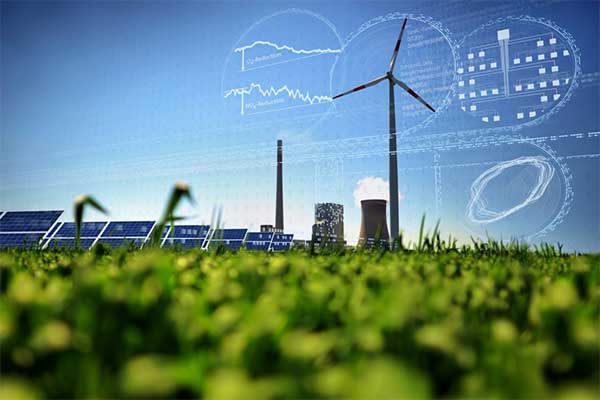- Decentralization has many benefits, such as lowering transmission costs and reducing other risks.
- Solar plants won’t be able to reach their full potential or ensure maximum returns until we address the challenges of decentralization.
- The industry needs to rethink operations and maintenance (O&M) practices to meet the greater learning demands operators of renewable energy facilities will face.
- Breakthroughs in software and technology present a strategic opportunity to boost interconnectivity between decentralized energy sources, yielding more efficient and profitable solar systems.
As Europe rapidly moves to adopt renewable energy technologies, we’re seeing a generational shift in our energy systems. The growth of renewables will come to define the coming decades, not just as a replacement for fossil fuels, but also as infrastructure and profitable assets for investors. An unheralded benefit of this rollout is energy decentralization.
Decentralization refers to distributing production across smaller facilities, which reduces transmission costs since the source of the energy can be closer to the end user – think wind or solar farms powering nearby towns or factories. It enables property owners that previously had to pay a premium to import fuel to transition into producing their own power.
With decentralization, fuel doesn’t have to be transported over long distances, which lowers the risk of harmful leakages or spills. Distributed energy generation also offers more customization opportunities. Regional or local renewable energy projects can be modular, making it easier to adapt to a community’s needs and geographical peculiarities. Distributed energy also creates opportunities for greater efficiency, by combining local heat and power production and locating energy storage closer to the energy sources.
However, shifting to a new energy model also presents new challenges.
Today, our energy systems are still highly concentrated, with a handful of large power plants doing most of the heavy lifting. As a result, it’s essential to keep these plants running at high capacity. Monitoring powerplants and their energy outputs can be done by only a handful of expert technicians. Decentralizing means spreading out power production over more plants – many, many more – and, in turn, could end up requiring correspondingly more operators.
Operators of renewable energy plants will likely also need more technical expertise since renewables, from solar to wind to energy storage and green hydrogen, are all continually changing and becoming more technologically innovative. Thus, as energy is decentralized, the industry also needs to rethink operations and maintenance (O&M) practices.
The sector features ever more technologies, but that doesn’t rule out standardization
This rethinking doesn’t need to be a negative. In fact, it presents an important opportunity to design a more efficient system. Unlike the processes producing energy from fossil fuels that reach their efficiency limits based on the chemical makeup of the fuels themselves, solar energy’s source is unlimited. That means the ceiling for delivering solar power is entirely defined by the limits of our technology – and how ‘intellegently’ we operate and maintain it.
A key step is standardization. Given the sector’s degree and speed of innovation, from module construction to wafer edge length and much more, there are aspects that will be difficult to standardise across multiple plants that use varying technologies from different time periods.
However, a number of areas in solar plant operations can be standardized with the use of breakthroughs in software and technology.
Undertaking these steps will not only make decentralized renewable energy work better for everyone, it will also help make it more productive, but a key requirement as renewable energies also aim to supply a significant portion of our energy needs.
State-of-the-art O&M practices and technology have enabled a much larger share of monitoring and analysis to be performed offsite and digitally. Collecting and analyzing digitized data enables O&M providers to refine their understanding of a plant, mitigate risks, and address issues faster. The emergence of artificial intelligence and machine learning, along with technologies like unmanned aerial inspections, further help operators develop ‘smart’ predictive and preventive practices.
Investors or owners of more than one solar plant can especially benefit from this enhanced efficiency. Every plant adds more data to a set, and thus additional value even beyond its energy output. That’s because the larger the data set is, the more accurately patterns and other information can be gleaned and understood from the data. An owner or investor in multiple plants can apply that knowledge across all of their facilities.
Distributed systems can still be interconnected
The networking of multiple plants, and the collecting and aggregating of their data, could become a benefit of distributed energy. The shift towards decentralization could even result in energy production plants becoming more interconnected than in the past. Networking plants enables an aggregation of data, which, as discussed above, can work to everyone’s advantage by reducing energy losses, and by providing advances in efficiency and cost savings.

Timo Moeller is the President International at NovaSource Power Services, responsible for the strategic growth and operational excellence in the international markets. Prior to joining NovaSource, Moeller served as Head of Commercial and Revenue of First Solar’s Energy Services division.
Plants can be connected if they share an owner, but otherwise, unconnected plants can also reap networking gains when they’re managed by the same O&M provider. For example, an independent operations and maintenance service can provide data aggregation, analysis, and the resulting insights across all of the solar plants it works with, creating a beneficial network effect even without a shared owner.
Innovation vs. standardisation? We can do them both
Continual improvements could appear to conflict with standardization. But through digitization and operational networking, O&M updates and innovations can be applied quickly across many solar power plants.
Without digital standards across a range of plants, each will be struggling alone, without the data to fully understand the operational and technical issues they face. They will produce less power as a result, investors will see lower returns, and the end users will have less renewable energy. It will be much harder to compete with fossil fuels this way.
Instead, to fully enjoy the many benefits of decentralized energy systems, we need to take advantage of every possibility to standardize our O&M practices and technologies and to network as widely as we can.












Comments